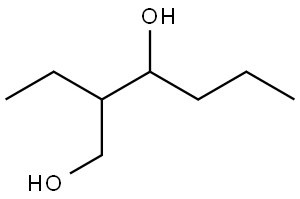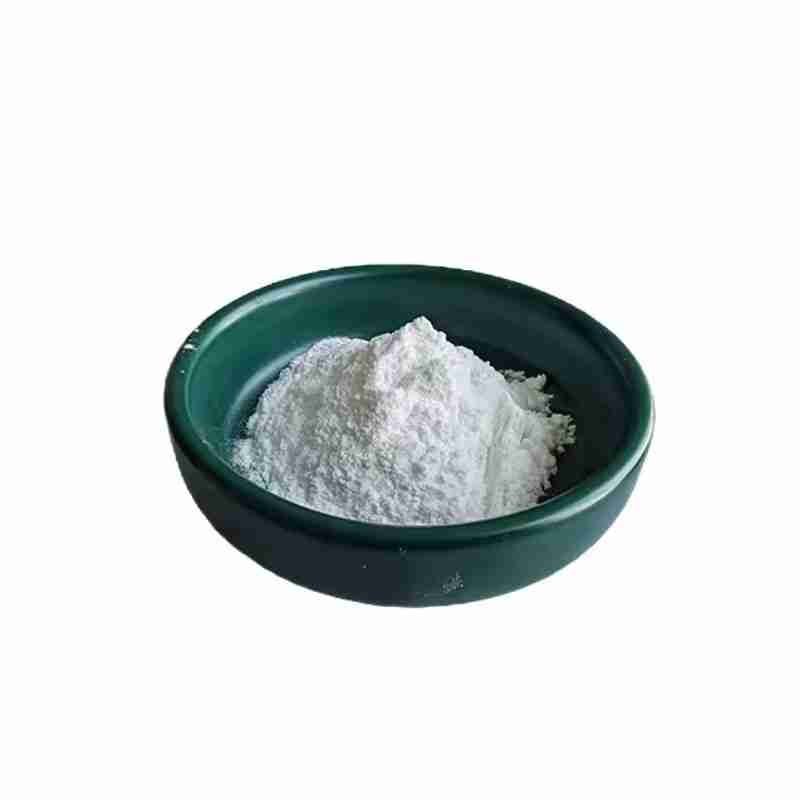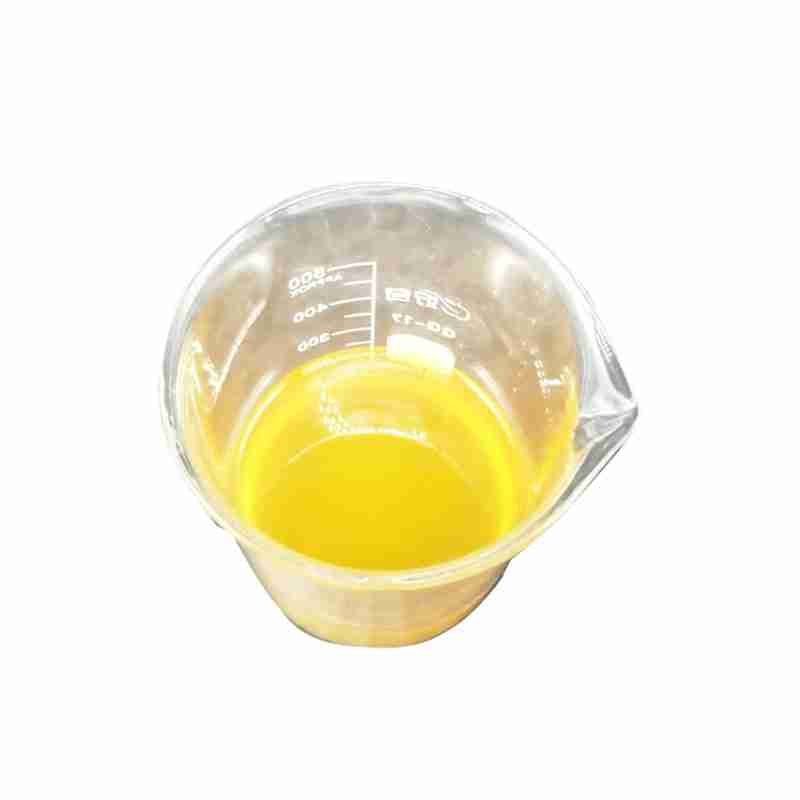2-Ethyl-1,3-hexanediol CAS #94-96-2
2-Ethyl-1,3-hexanediol is a colorless viscous liquid used as a plasticizer in the plastics and resin industry. It is also used in ink formulation to increase the permeability of ink on paper.
First, butyraldehyde is synthesized from propylene. Under the catalysis of alkali or acid, butyraldehyde self-condenses to generate 2-ethyl-3-hydroxyhexanal. This compound is very unstable and can be obtained by hydrogenation to obtain 2-ethyl-1,3-hexanediol.
发送询盘
2-Ethyl-1,3-hexanediol CAS #94-96-2
| 2-Ethyl-1,3-hexanediol Basic information |
| Product Name: | 2-Ethyl-1,3-hexanediol |
| Synonyms: | OCTYLENE GLYCOL(R);RUTGERS 612(R);2-ethyl-1,3-hexyleneglycol;2-Ethyl-2-propyl-1,3-propanediol;ETHOHEXADIOL(R);ETHOHEXADIOL(TM);2-Ethyl
hexanediol;2-ethyl-1,3-hexanediol,mixtureofisomers |
| CAS: | 94-96-2 |
| MF: | C8H18O2 |
| MW: | 146.23 |
| EINECS: | 202-377-9 |
| Product Categories: | Building Blocks;Chemical Synthesis;Organic Building Blocks;Oxygen Compounds;Polyols |
| Mol File: | 94-96-2.mol |
 |
|
| 2-Ethyl-1,3-hexanediol Chemical Properties |
| Melting point | -40 ??C (lit.) |
| Boiling point | 241-249 ??C (lit.) |
| density | 0.933 g/mL at 25 ??C (lit.) |
| vapor density | 5 (vs air) |
| vapor pressure | <0.01 hPa (20 ??C) |
| refractive index | n20/D?1.451(lit.) |
| Fp | 265???F |
| storage temp. | Store below +30??C. |
| solubility | 42g/l |
| form | Liquid |
| pka | 14.85??0.10(Predicted) |
| color | Clear |
| Odor | at 100.00?%. odorless |
| Water Solubility | 42 g/L (20 oC) |
| Sensitive | Hygroscopic |
| Merck | 14,3744 |
| BRN | 1735324 |
| Dielectric constant | 15.24 |
| LogP | 3.63 at 20?? |
| CAS DataBase Reference | 94-96-2(CAS DataBase Reference) |
| NIST Chemistry Reference | 1,3-Hexanediol, 2-ethyl-(94-96-2) |
| EPA Substance Registry System | 2-Ethyl-1,3-hexanediol (94-96-2) |
| Safety Information |
| Hazard Codes | Xi |
| Risk Statements | 41 |
| Safety Statements | 25-26-39-46 |
| WGK Germany | 1 |
| RTECS | MO2625000 |
| Autoignition Temperature | 340 ??C DIN 51794 |
| TSCA | Yes |
| HS Code | 29053980 |
| Hazardous Substances Data | 94-96-2(Hazardous Substances Data) |
| Toxicity | LD50 in male, female rats (ml/kg): 9.85, 4.92 orally (Ballantyne) |
- 2
- 2-diallylpent-4-en-1-amine
- 4
- 95-16-9
- Ammonium sulfamate
- Benzothiazole
- cas:67889-00-3ح2
- cas:83524-75-8 | pigment black 32
- cas:928836-00-4 | 2
- cas:932745-70-5 | 4
- Chemical Minerals
- Coconut diethanolamide
- Daily Chemicals
- discount
- for sale
- General pvc resin
- hexyl D-glucoside
- in stock
- Lauramidopropyl betaine
- LAURIC ACID MONOETHANOLAMIDE
- Petroleum Additives
- Plasticiser
- Ploymers
- price
- PVC
- quotation
- Raw Materal
- Remove term: Petroleum Additives Petroleum Additive
- SODIUM ETHYL 2-SULFOLAURATE
Related Products
Butylated Hydroxytoluene (BHT) is a synthetic phenolic antioxidant commonly added to foods, cosmetics, and packaging to prevent the oxidation of fats and oils, thereby extending their shelf life. It is also used as a preservative in a variety of products, including rubber, petroleum products, and animal feed. BHT is recognized for its effectiveness in maintaining nutrient levels, color, flavor, and odor in food products . It is known to have a melting point of 69-71??C, a boiling point of 265??C, and is soluble in ethanol, acetone, and benzene, but not in water, glycerin, or propylene glycol . BHT is also used in some dietary supplements due to its antioxidant properties . However, it is important to handle BHT with care, as it can cause skin irritation and is considered harmful if swallowed .
Chemical Name: Ammonium Iron(II) Sulfate
Synonyms: Diammonium iron bis(sulphate); iron (ii) ammonium sulfate
CAS No.: 10045-89-3
Molecular Formula: FeH5NO4S
Molecular Weight: 170.95
Silicones are a family of synthetic polymers known for their versatility and stability. They are heat-resistant, non-toxic, and have excellent electrical insulation properties. Commonly used in various industries such as construction, automotive, aerospace, and personal care products, silicones offer a wide range of applications from sealants and adhesives to lubricants and medical devices. Their resistance to extreme temperatures and weathering makes them a preferred choice for many high-performance applications.
N,N-Dimethylaniline is an organic compound with amine and methyl groups attached to a benzene ring. It is a colorless liquid with a characteristic amine odor. This compound is primarily used as a chemical intermediate in the synthesis of dyes, pigments, and polymers. Its reactivity makes it a valuable building block in the production of various organic compounds, particularly in the pharmaceutical and chemical industries.
Silicone oil, known for its chemical designation as dimethicone or polydimethylsiloxane, is a synthetic polymer with a backbone of alternating silicon and oxygen atoms, creating a highly versatile and stable compound. It is renowned for its exceptional lubricating properties, heat resistance, and non-toxic nature, making it a staple in various industries, including cosmetics, automotive, and aerospace.
This hydrophobic, non-volatile oil is valued for its ability to provide a smooth, non-greasy feel and to form stable emulsions with other ingredients. In personal care products, silicone oil is used to impart a silky texture, reduce friction on the skin, and create a protective barrier against environmental stressors without clogging pores.
Silicone oil’s chemical inertness and resistance to oxidation contribute to its long shelf life and stability in formulations. It is also appreciated for its compatibility with a wide range of substances, allowing for the creation of multifunctional products.
In summary, silicone oil is a reliable and multifaceted ingredient, offering a combination of performance, safety, and sensory benefits. Its use in a variety of applications reflects its versatility and enduring appeal in the marketplace.
Chemical Name: Dehydrocholic acid
Synonyms: Acide dehydrocholique; Triketocholanic acid
CAS No.: 81-23-2
Molecular Formula: C24H34O5
Molecular Weight: 402.53
Appearance: Powder
3,4-Ethylenedioxythiophene is a synthetic organic compound characterized by its unique structure that includes a thiophene ring with ethylenedioxy substituents at the 3 and 4 positions. This compound is known for its potential applications in the synthesis of various organic materials, including pharmaceuticals and organic electronic devices such as sensors and solar cells. Its stability and reactivity make it a versatile intermediate in the chemical industry.
Product name:Cyclopentane
Purity:96%
Appearance:White powder
Package:25kg/bag
Sample:Available
Chemical Name: Imazalil Sulfate
CAS No.: 58594-72-2
Molecular Formula: C14H14Cl2N2O.H2SO4
Molecular Weight: 395.26
Appearance: Solid
Chemical Name: 3-Hydroxybutyric acid
CAS No.: 625-71-8
Molecular Formula: C4H8O3
Molecular Weight: 104.1
Appearance: White powder
Chemical Name: Ashwagandha Extract
Synonyms: Withania somnifera, ext.; Withania Somnefera Extract
CAS: 90147-43-6
Appearance: Brown
Chemical Name: o-Xylene
Synonyms: 1,2-Dimethylbenzene; ortho-xylene
CAS No.: 95-47-6
Molecular Formula: C8H10
Molecular Weight: 106.17

















